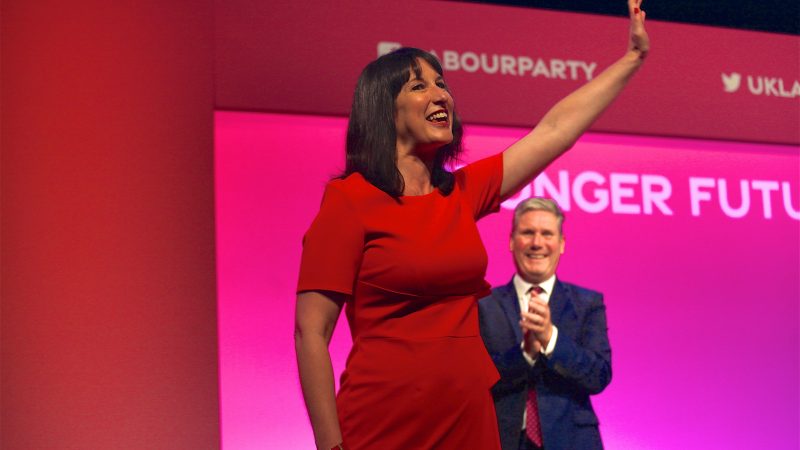
Labour leader Keir Starmer’s conference speech promised a “genuine partnership” between the public and private sectors, building a “bridge from the jobs we must protect today to the opportunities we have to win tomorrow”. He said Labour believed in not only “sound money” and cutting debt, but also investment where it can “kickstart growth… save money… protect jobs, create jobs, crowd in billions of private investment”.
It followed Shadow Chancellor Rachel Reeves’s pledge to increase business investment and involve private investors in creating a ‘national wealth fund’.
Blended finance – where government uses its capital and policy instruments to catalyse other, larger sources of investment – provides a way for this to be achieved. Well deployed, it can crowd in multiples of private investment for every £1 of taxpayer money spent.
UK investment is chronically low
Investment in the UK, both public and private, is chronically low compared to its peers, ranking the lowest among G7 countries. This has to increase if the country is to see meaningful productivity growth, address regional disparities and meet its net zero climate commitments.
Getting to net zero alone is estimated to require additional annual investment of more than £50bn by 2030, across sectors including electricity supply, residential buildings and surface transport. Retrofitting the existing social housing stock will cost an estimated £104bn, while in London alone, the funding requirement for providing new social housing is forecast to be £22.2bn a year until 2028.
A budget-constrained future government will need to be much more ambitious about crowding in private investment and working collaboratively with institutional investors to meet these priorities – economic, environmental and social.
A tried-and-tested way to boost investment
Research to be published by the LSE’s Grantham Research Institute later this month shows how this ambition could be delivered, by using a financing approach that combines public and private investment in a range of sectors, from housing, renewable energy, health, to funding start-ups and infrastructure projects.
Blended finance offers a tried-and-tested way of mobilising private investment at scale. Examples of this approach show how it has been used successfully, internationally as well as in the UK. In one renewable energy fund highlighted in the research, public funding of £100m catalysed £450m from private investors.
These examples demonstrate effective ways for government funding to attract multiples of private capital, potentially mobilising £50bn of new investment into public policy priorities by 2030.
The approach advocated is not for a tired re-run of the private finance initiatives of the 1990s and 2000s – long-term contracts between government and the private sector in public infrastructure projects which have been criticised for providing better value and outcomes for private investors than for the taxpayer.
Rather than an approach that creates financing structures which shift public responsibilities off the public balance sheet, or defers costs for accounting purposes, the LSE research seeks to raise government’s ambition to work effectively with private investors for public good, through collaboration, co-design and the use of investment vehicles that fulfil the aims of all involved.
Mirroring EU and US strategies
It is an approach that is already being deployed, at scale, by the UK’s competitors in Europe and the US. The US Inflation Reduction Act directs nearly $400bn in federal funding to clean energy, via a mix of tax incentives, grants and loan guarantees. Analysts estimate that the IRA will unlock $3trn in private sector investments over the next decade.
In the EU, the Green Deal commits more than €1trn to transition its member countries to a sustainable economic model, with a key element of the programme being the InvestEU programme. This aims to use guarantees from the EU budget to crowd in €372bn in additional public and private investment.
Without a significant step-up in its own use of blended finance for sustainable growth, the UK risks falling further behind its global competitors. The rewards for doing so would also be substantial.
Fast-growing British companies in sectors such as green technology are crying out for the investment they need to expand, creating new “future fit” jobs in the process.
There is huge opportunity for a future Labour government
By seizing the potential now offered by blended finance, a potential future Labour government would not just be able to dedicate more spending to its priorities, by mobilising multiples of its own investment, but would “spend smarter”, delivering better value for money and greater impact for every £1 of taxpayer money spent.




More from LabourList
What are Labour figures proud of this year – and what are their hopes for 2026?
Lord Hayward: Disappointing May elections could decide Keir Starmer’s fate
LabourList Christmas quiz 2025 round 5: factions and unions picture round